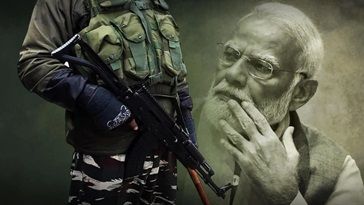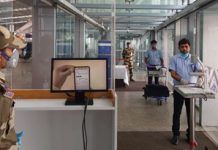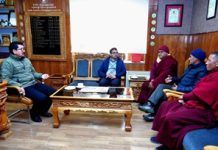Citing the recent assassination attempt on former US President Donald Trump, the central government has asked Director Generals of states, union territories and paramilitary forces to increase security measures so “high-risk dignitaries” can be kept safe, particularly during rallies, corner meetings, and roadshows.
Trump survived an assassination attempt on July 13, while addressing a campaign rally near Pennsylvania. He was shot and wounded in his right ear by a 20-year-old man, who fired eight rounds with an AR-15–style rifle from the roof of a building.
The incident is one of seven assassination attempts cited by the Centre in its communication shared on July 16 with the DGs, including those in-charge of the CRPF, CISF, ITBP, NSG as well as state intelligence bureaus.
“Former PM of Japan, Shinzo Abe, was fatally shot on July 8, 2022 from close quarters by an individual using a homemade shotgun, while addressing a corner public meeting. During a road march, former Pakistan PM Imran Khan was fired upon on November 3, 2022 and reportedly suffered a bullet injury. Vice-President of Argentina, Christina Fernandez, escaped an assassination bid on September 1, 2022 as a man unsuccessfully tried to fire a loaded pistol close to her head,” said an official, citing the communication from the Centre’s internal security division.
“During an election campaign speech of former PM of Japan, Fumio Kishida, on April 15, 2023, a youth hurled a smoke bomb towards him from within the crowd. Fernando Villavicencio, one of the candidates for the Presidency of Ecuador, was shot dead on August 9 last year as he rode a police pick-up vehicle after a public rally. Slovak Prime Minister Robert Fico suffered life-threatening injuries when he was shot and wounded in an attempted assassination on May 15 this year during a public event,” said the official.
The note states that such incidents underline the vulnerabilities of high-risk dignitaries to various threats during public interfaces, including rallies, corner meetings, and roadshows. “We all should work on three main points – physical security measures, technical surveillance, and contingency drills and role of personal security officers,” the official said, citing the communication.
Physical security measures include controlling access to the venues and checking/frisking of men and material. “The proximate area should have only a minimum number of authorised persons and there should be no crowding around the dignitary. The venue should be put through comprehensive physical, visual and technical checks followed by deployment of security personnel. The area up to a sufficient depth around the venue should be secured and all high-rise features as well as other vantage points in the vicinity that offer a direct line of sight of the dignitary should be sanitised and dominated,” said the official, citing the communication.
The official said drills to prepare for possible contingency situations or eventualities should be formulated and rehearsed. These include providing immediate cover to the dignitary, rapid threat neutralisation, and evacuation to a safe location/hospital in the shortest possible time. “PSOs of the protectee should always remain alive to the situation, be vigilant and quick in sensing and responding to a threat. They should be positioned in such a manner so as to have 360 degrees observation to detect any threatening movement/activity,” said the official, citing the communication.








